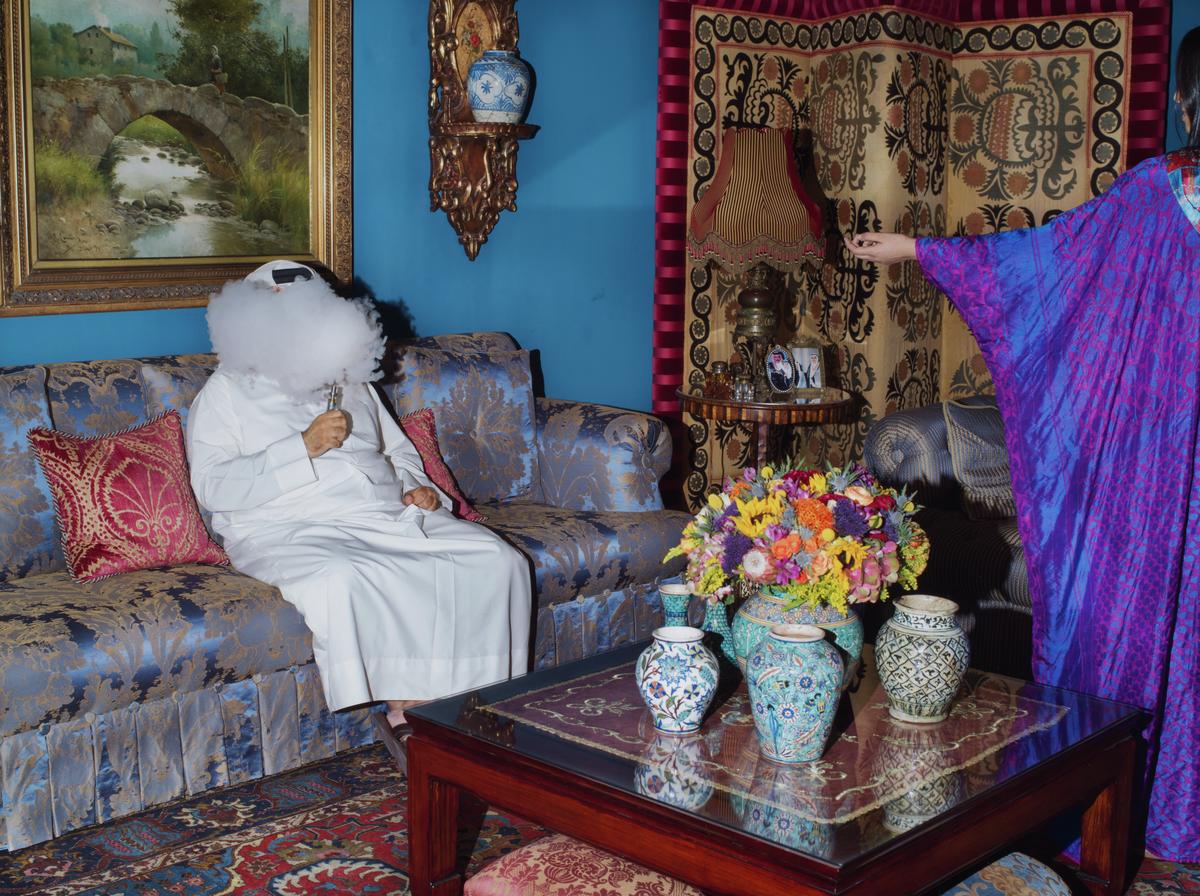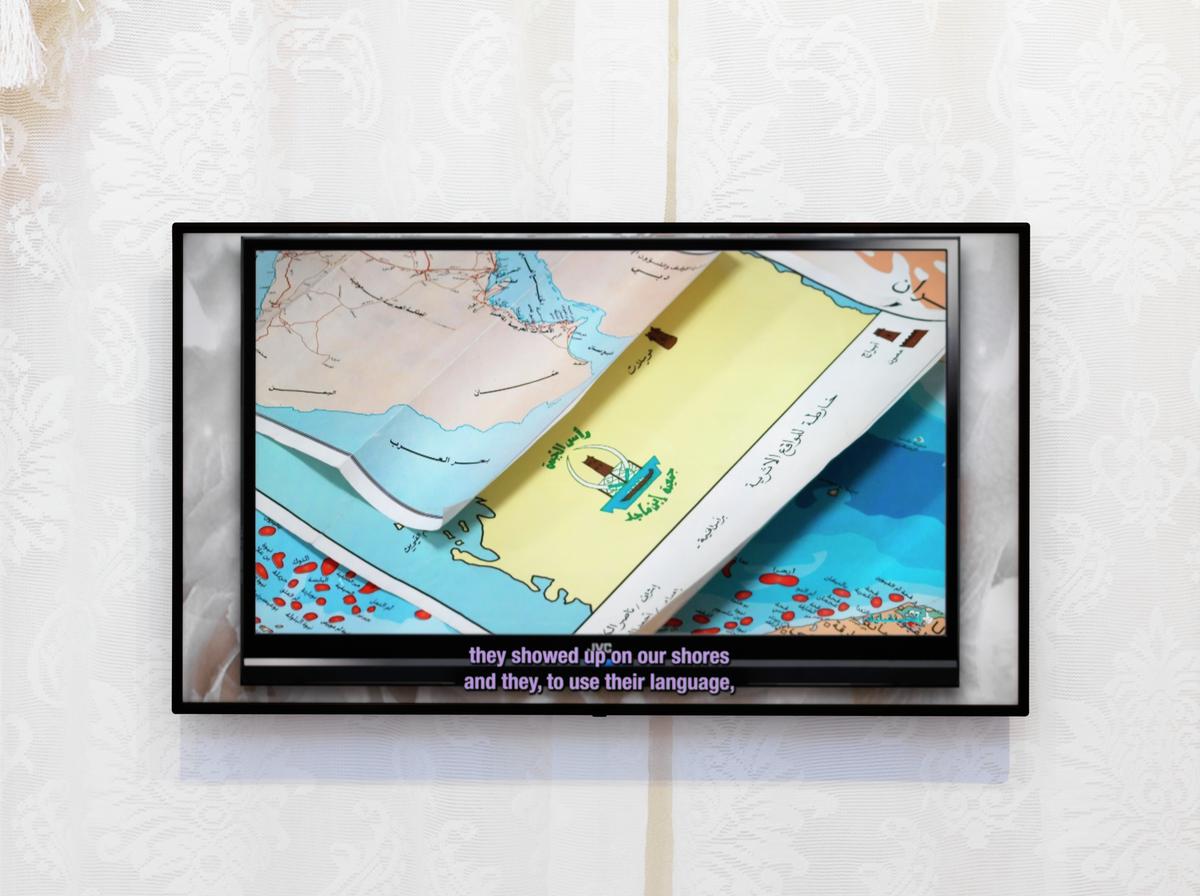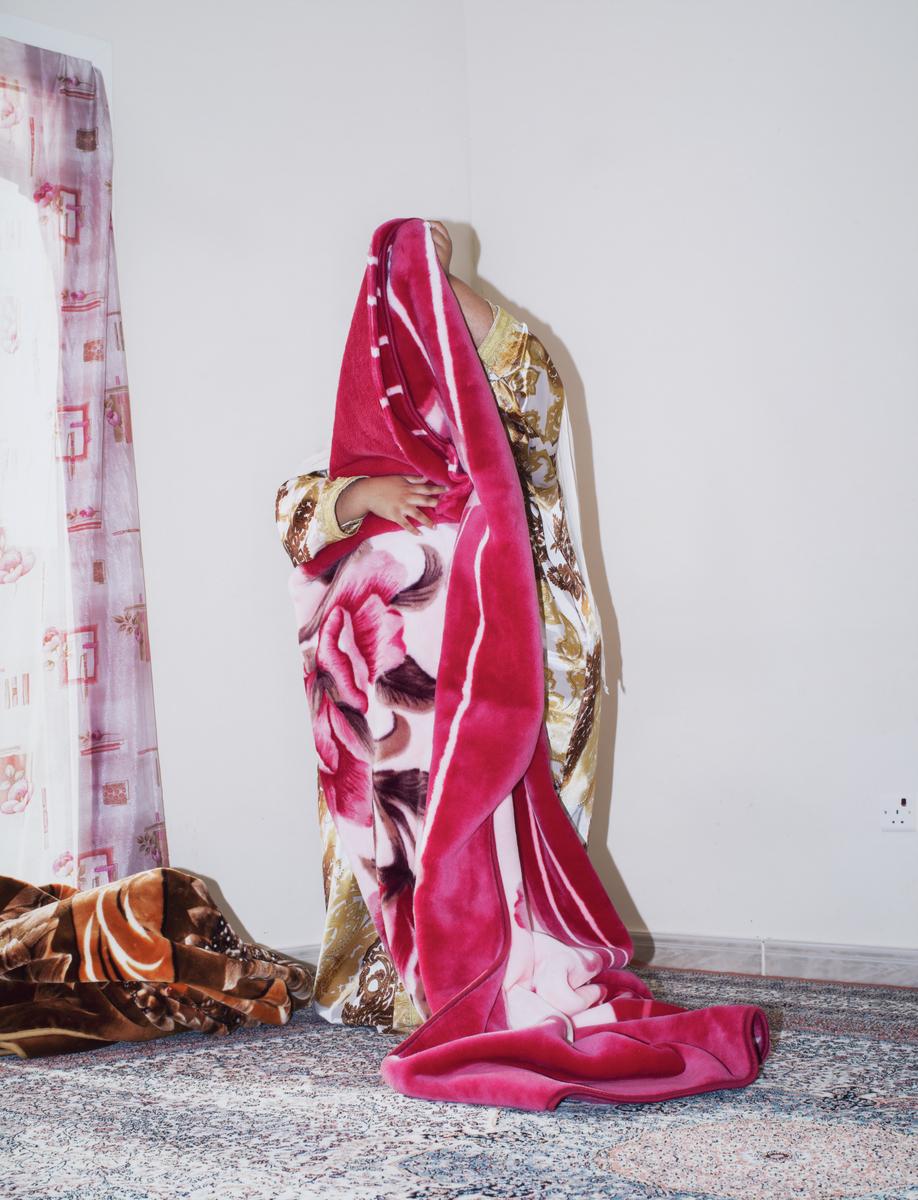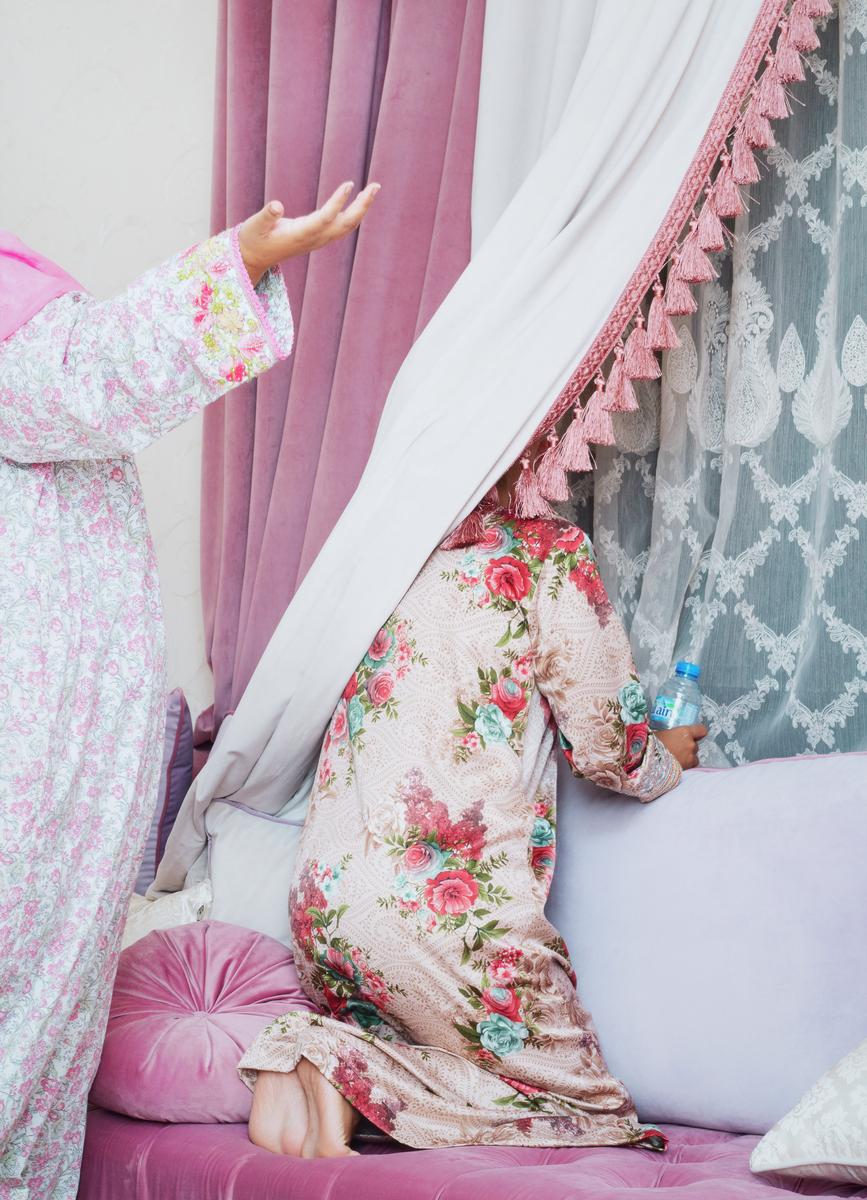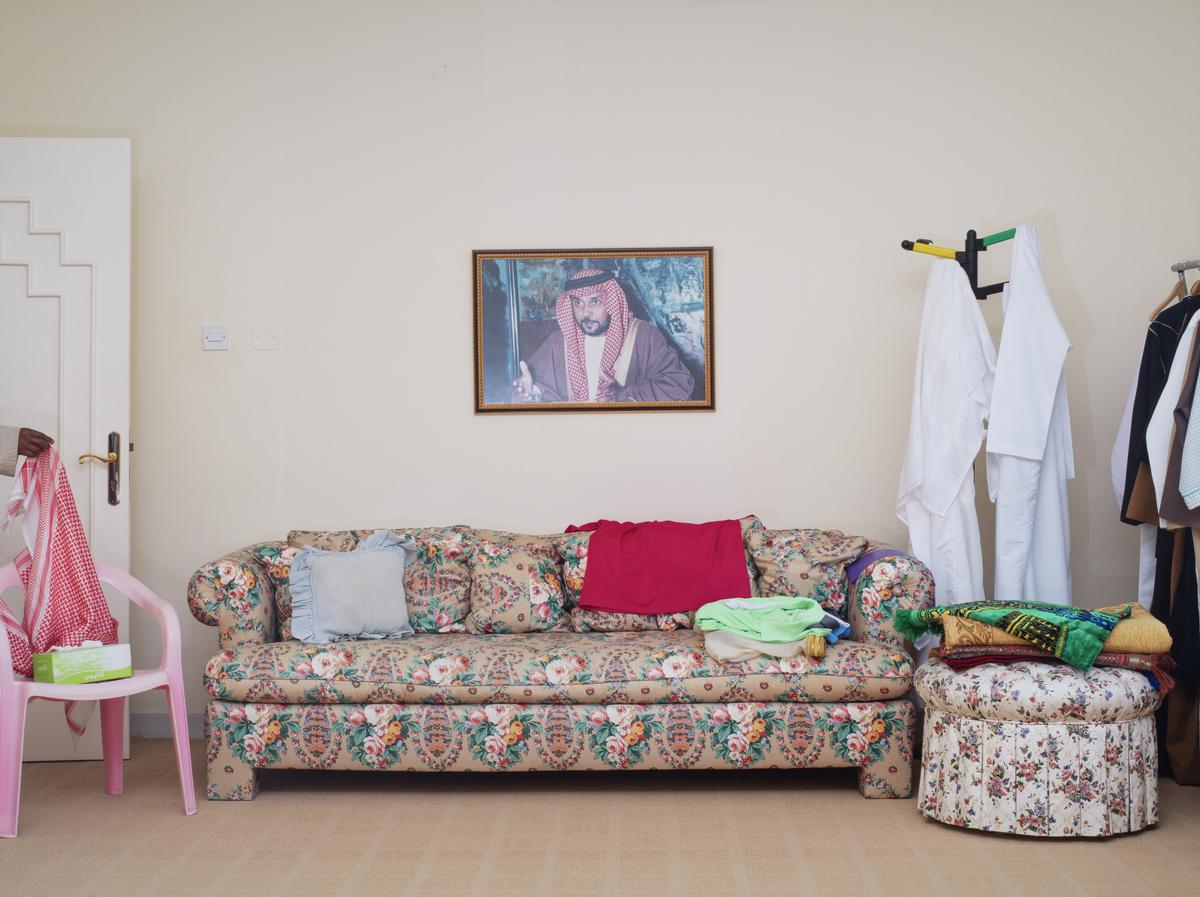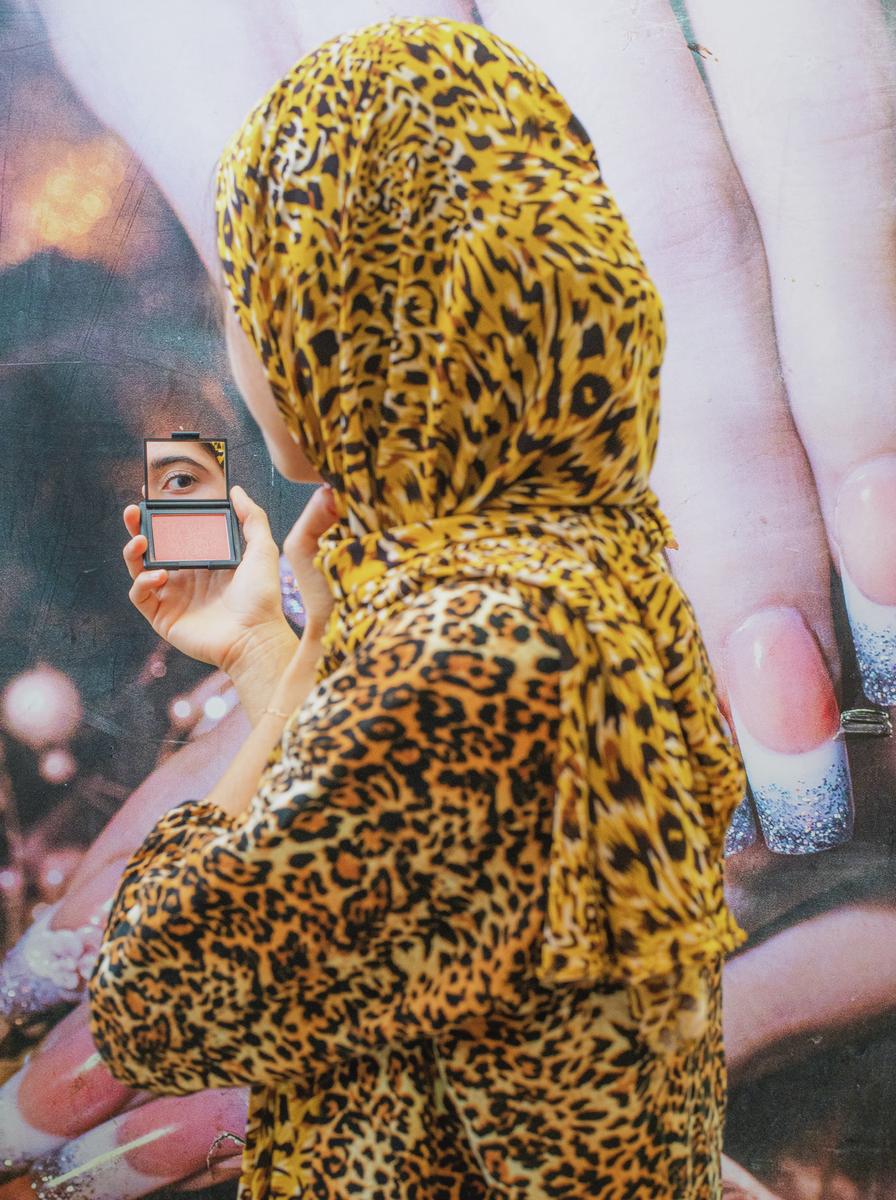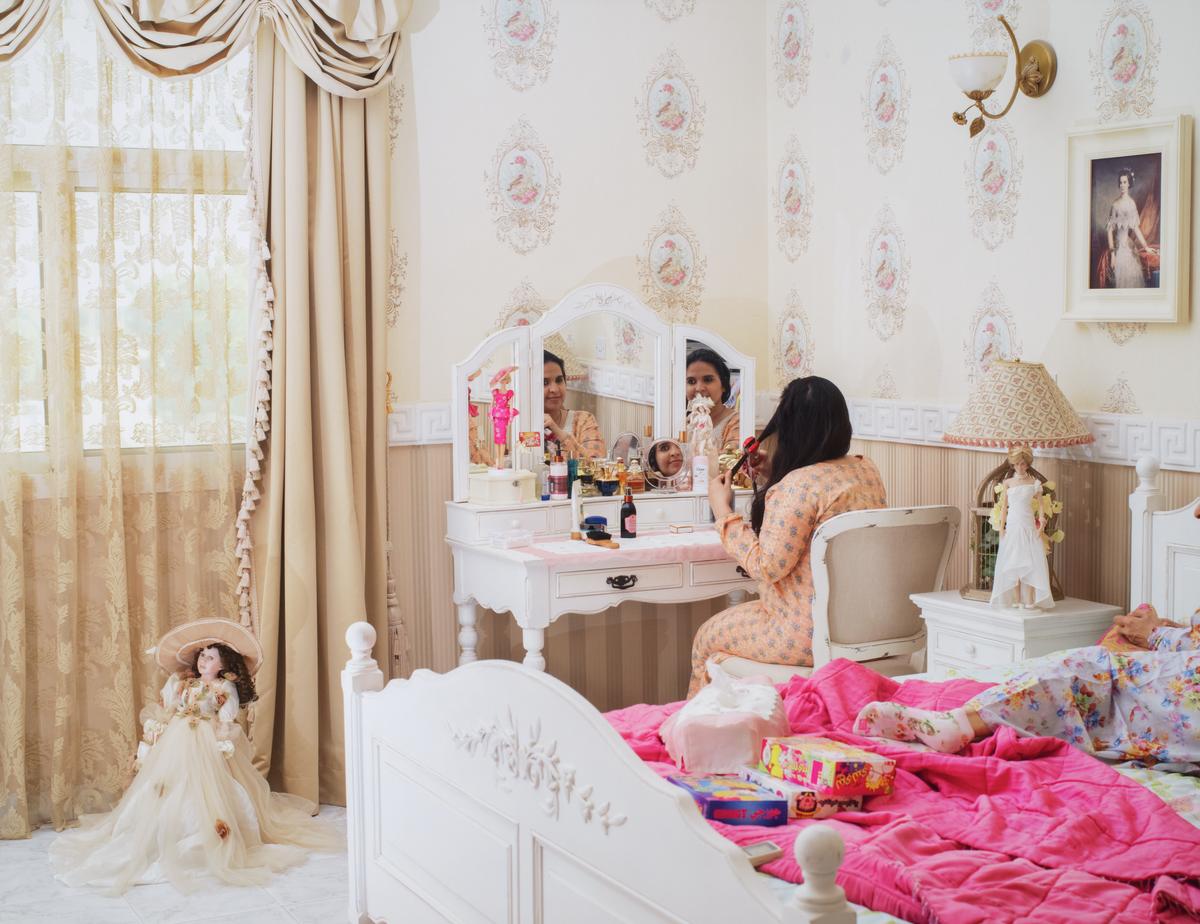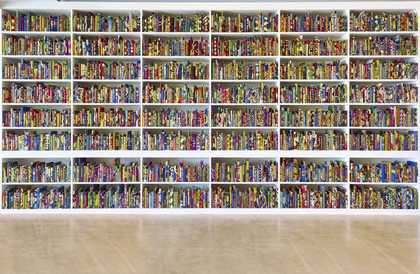Learn about the impact of immigration on British culture in The British Library
Yinka Shonibare CBE was born, studied and lives in London, but grew up in Lagos, Nigeria. He was awarded the CBE (Commander of the Most Excellent Order of the British Empire) in 2019 and has added the title to his professional name. His dual identity as British-Nigerian has been the starting point for much of his work. This is particularly true for The British Library, which contains more than 6,000 books.
Printed in gold on the spines of 2,700 of the books are the names of first or second-generation immigrants to Britain. Whether celebrated or lesser known, they have all made significant contributions to British culture and history. There are also books with the names of those who have opposed immigration. Other books are unmarked, suggesting that the story of immigration in Britain is still being written.
The books are bound in African wax print fabric, the artist’s signature material. The history of this fabric reveals a complex relationship between colonialism, cultural appropriation and national identity. It was developed in the nineteenth century in the Netherlands as a mass-produced imitation of the batik dyeing process used in Indonesia, a Dutch colony at the time. The cheaper, machine-made textiles were poorly received in Indonesia. In West and Central Africa, however, they were quickly adopted and absorbed into local traditions.
An important part of the installation is a website, which can be accessed from the tablets. It contains recent materials selected by the artist to present different viewpoints relating to immigration. You are invited to submit your own story, and a selection of visitors’ responses will be available to view on the website.
Art in this room
